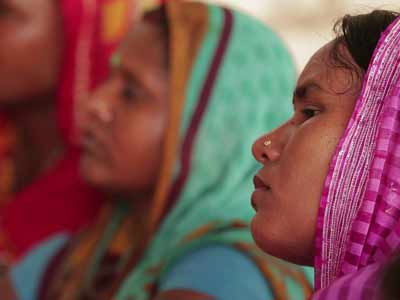Factors like access are important while considering clean cooking fuels for the masses
Recently, it was reported that the Uttar Pradesh government was working with NITI Aayog to distribute 20,000 methanol cookstoves to the poor in areas where the Ujjwala scheme had not reached [1]. This indeed is a welcome step because any clean and efficient solution that helps women breathe easy while cooking must be tried. Globally, alcohol fuels, primarily ethanol, are getting a lot of attention as cooking fuels of the future. Some pilot projects using ethanol as well as methanol cookstoves were carried out in countries such as Tanzania, Nigeria, and Malawi; and overall results had been encouraging. Use of methanol as cooking fuel, however, is still in very early stages, especially on account of the perceived health effects associated with its accidental ingestion.
But first, the mindset that 'distribution' of clean cookstoves – methanol or otherwise – is the panacea must be abandoned. Many studies, including TERI's own primary surveys, have established that mere ownership of say, a LPG connection or an electric induction cooktop, does not automatically mean that the household has moved up the energy ladder or is using these for primary cooking. Essentially, this is a necessary but not sufficient condition to completely shift a household to clean cooking. Many factors can be attributed to this phenomenon, ranging from socio-cultural to economic aspects. A recent survey undertaken by TERI threw up some interesting observations. In some rural areas in Himachal Pradesh, while the households had access to LPG as well as induction cooktops (along with reliable electricity supply), primary cooking still continues to be done on biomass cookstoves. The reasons include the fuel being free (women's labour in looking for firewood is not taken into account) as well as prevalent cooking practices. This shows that provisioning of clean cooking devices or fuel is only one part of the larger scheme of things that must also include sustained campaigning around health impacts and behavioural changes.

Coming back to the proposed methanol cookstoves in UP, these are meant for places where LPG connections under Ujjwala scheme have not reached those who need them. What could have been the reasons for LPG not reaching such places? Are these remote locations or are there issues related to the distribution network? Whatever may be the case, one would ask that if it is difficult to take LPG to these places when its distribution is relatively well established, how confident are we for a completely new fuel to reach – and continue to be replenished in – these very places when its supply chain is going to be set up de novo? We know through experience that for a cooking fuel to be adopted in any meaningful way, its supply chain has to be robust and convenient. In fact, even in the African countries where ethanol/methanol cookstoves have been piloted, distribution at an affordable consumer price was observed to be a key determinant. Given the fact that it is proposed to source methanol from Assam for utilisation in UP, this point, together with the cost of delivery, assumes greater importance.
It is evident that in the short to medium term, many practical challenges will have to be addressed for methanol cookstoves to become a real clean cooking option for the masses. Given that these challenges pertain not so much to cookstoves per se but to methanol supply itself, a long-term perspective is essential. After all, everyone wants the real journey to start after the methanol cookstoves are distributed rather than it ending then and there.
[1] Niti Aayog in talks with UP over distribution of 20K methanol stoves: Saraswat

